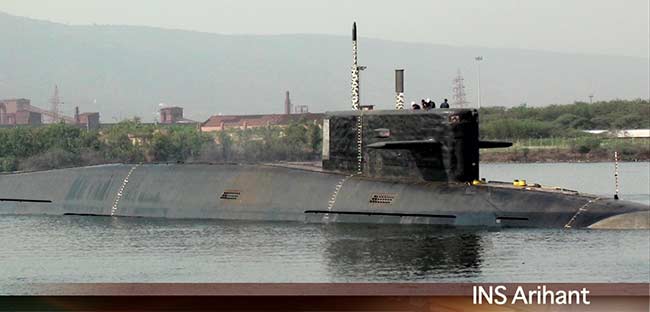- Views: 1K
- Replies: 18

India's growing fleet of nuclear-armed ballistic missile submarines (SSBNs) could be a significant factor in the US strategic posture in the Indo-Pacific region, according to Kris Osborn, President of the Center for Military Modernization.
Specifically, India's Arihant-class submarines, represent a key asset to deter regional adversaries like China.
India's Nuclear Deterrent
The Arihant-class submarines are India's first domestically built SSBNs.Their precise operational numbers remain confidential, but the mere fact of their existence boosts India's nuclear triad and adds credibility to its regional deterrence policies.
Why Indian SSBNs are Important to US Strategy
Osborn outlines several reasons why Indian SSBNs are valuable to US interests in the Indo-Pacific:- Increased Pressure on China: The deployment of Indian SSBNs, alongside the upcoming US Columbia-class submarines, forces China to address a "two-pronged" threat beneath the waves. This complicates Chinese military maneuvers and may help curb aggressive ambitions.
- Countering China's Nuclear Expansion: In response to China's accelerated nuclear modernization efforts, including the potent JL-3 submarine-launched missiles, a robust counter is required. Indian SSBNs present a vital component of that counter, ensuring Chinese nuclear threats are met with a credible response.
- Indirectly Protecting the US: China's growing submarine power and the long-range JL-3 missiles are a potential danger to the US mainland. By occupying Chinese attention in the Indian Ocean region, Indian SSBNs indirectly lessen the threat directed towards the US.
Potential Areas for Cooperation
Osborn's assessment implies that the US and India may find value in increased cooperation around their respective SSBN programs. This could involve:- Information sharing: Providing a coordinated regional picture of maritime threats and submarine movements.
- Joint exercises: Developing tactics and procedures to maximize SSBN effectiveness in contested environments.
- Technology exchange: Exploring potential technology transfers and research partnerships, with appropriate safeguards, to improve submarine technology on both sides.
Conclusion
In the ongoing strategic competition within the Indo-Pacific, India's nuclear submarine capabilities are likely to gain even more significance in the years to come.It appears the US recognizes the value of these assets and the potential for enhanced cooperation with India as a force for stability in the region.
